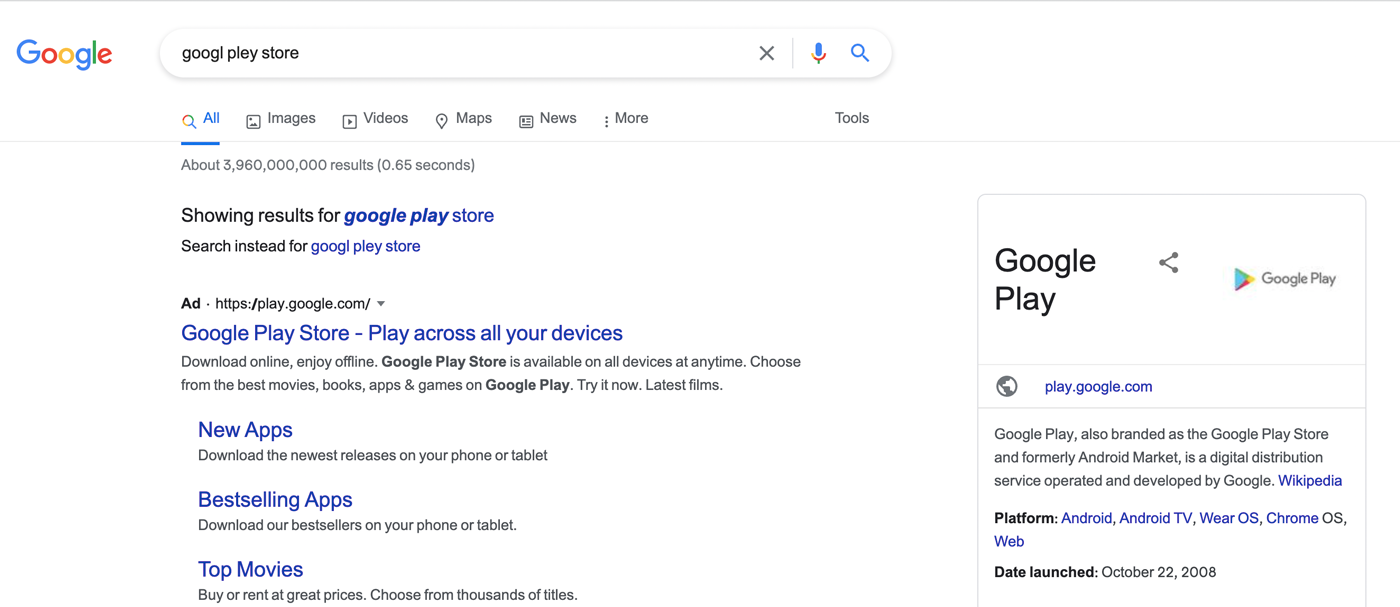What is Google Hummingbird algorithm
- SEO Tutorials
- Updated on

To improve its performance and user satisfaction, Google designed different algorithms such as Panda Algorithm, Penguin Algorithm, and Hummingbird Algorithm. Going back a bit, we saw this scene many times; when we searched for a word or phrase in Google results, we came across many irrelevant pages and spam. These sites used black hat or gray hat SEO techniques to attract the user to their site, and when the user clicked on their site, he was faced with many annoying ads and pop-ups.
This caused user dissatisfaction. In addition to not achieving the desired result, they were faced with irrelevant and annoying advertisements. Google noticed users’ dissatisfaction and decided to deal with spam sites by designing various algorithms such as the Panda algorithm, Penguin algorithm, and Hummingbird algorithm. These algorithms had two main and important goals: to reduce the ranking of low-quality and spam sites and increase the ranking of quality and user-friendly sites.
Google’s primary goal is user satisfaction, and it has used various algorithms to achieve this goal. In the continuation of this article, we will talk about Google Hummingbird’s algorithm and state the purpose of designing this algorithm. So if you are also eager to know the performance of this algorithm, stay tuned for the end of this article.
Hummingbird algorithm
If we go back to previous years, we must all have had the experience that by searching for a phrase in Google, we did not get the desired result and instead came across pages with irrelevant content and spam in the list of initial Google results.
Unfortunately, these sites deceived Google by using black hat techniques such as creating spam links, using too many keywords on their site, and achieving high rankings in Google search results. This led to the dissatisfaction of many users, so Google also came up with different and new algorithms to deal with the wrong sites and removed them from the Google search results using the Hummingbird algorithm.
In the last few years, to get a high ranking in Google results and be seen, you had no choice but to repeat your keywords several times in the text. As a result, bombarding content with keywords causes the content to become poor quality. This factor led Google to develop an algorithm called Hummingbird, whose primary focus was on the meaning of the phrase, rather than on the keyword.
So on August 20, 2013, Google introduced the Hummingbird algorithm to identify the meaning of the searched term. Using this algorithm, it understood the meaning of its audience and users in Google search results. The primary purpose of Google’s introduction of this algorithm was to show closer and more accurate results to users and encourage webmasters to produce valuable and quality content.
The focus of this algorithm is more on the meaning of the phrase; even if we spell it wrong, Google still understands what we mean. For example, in Google, I type the phrase “simple application” incorrectly, but I still get the result I want in Google results. Look at the image below to better understand the concepts.

Another advantage of the Hummingbird algorithm is that it gets you to the desired result very quickly and gives you more explanations and information. For example, I searched for “Dr. Shariati’s birthday” on Google. In the image below, Google quickly showed us the exact result (November 23, 1933, Kahak).
In addition, he showed other information such as the date of death, burial place, education, occupation, and books written by him. Google provides you with other helpful information that may be useful to you. Google cares about everything and cares about its user.

Why the name of this algorithm is Hummingbird
The name of Google products is always chosen based on a specific concept; the reason for naming the Hummingbird algorithm is because the Hummingbird is a tiny bird with a lot of speed and accuracy of operation and can quickly identify its target.
Due to these characteristics of Hummingbird, the name of Hummingbird Algorithm was chosen for this algorithm because this algorithm also examines your searched phrase with great speed and accuracy and tries to identify and find the words of the same family and meaning, and searches for the meaning of keywords. It can introduce the best and closest results to its users. The Hummingbird algorithm fines pages that use many keywords in the content.
The primary purpose of the Hummingbird algorithm
The primary and general goal of the Hummingbird algorithm is to obtain user satisfaction. But in the meantime, the Hummingbird algorithm tries explicitly to know the meaning and concept of the phrase searched by the user and pay attention to the meaning of each word in the searched phrase so that it can show the user the results that the user is looking for. Therefore, the purpose of Google to provide this algorithm is to improve the quality of search results.
In addition, the Hummingbird algorithm displays information that the user is not looking for to increase the user’s sense of curiosity. So, to put it simply, the Hummingbird algorithm can understand the meaning of your search term more profoundly and conceptually and thus show you the appropriate pages. This algorithm is also called the semantic search algorithm. This means that every time you search for a word, this algorithm immediately finds the synonyms and takes you to your need and purpose.
Now you may be wondering how Google Hummingbird’s algorithm works and how does it know what the user means? To answer this question, you should be familiar with the two concepts of Google Knowledge Graph and semantic search, which we will explain below.
The Knowledge Graph
Using its Google Knowledge Graph, it can provide other information related to your searched term. The Google Knowledge Graph was released by Google a year before the Hummingbird algorithm and aimed to show accurate and relevant results about people and places and everything related to them. This information is collected by reputable sites such as Wikipedia and IMDB.
Knowledge Graph tries to discover the connection between topics and web pages and provides you with a summary of what you need based on the information gathered. For example, when you do a Google search for Hafez’s name, in addition to their biography, you see information such as books and poems on the left side of the page. You also add information to the Google Knowledge Graph by clicking on the sites in the Google results list. Google adds to your knowledge by analyzing your behavior with the pages of a website. It shows that Google can understand the conceptual connection between two Internet pages.
Semantic search
Semantic search is another concept for understanding user behavior. A semantic or conceptual search is more than a word-for-word search. In conceptual search, the focus is not only on the words being searched but also on their meaning. For example, when we do a Google search for “I want to learn to program,” the results show that Google brings the concept of search to our phrase.
Improve site SEO using Hummingbird Algorithm
As we have known so far in the article, the goal of the Hummingbird algorithm is user satisfaction. This algorithm pays attention to the meaning and concept, the quality of the content produced, and how much the users pay attention to it. Therefore, it affects SEO and site optimization. Here are some essential tips to get points from Google Hummingbird’s algorithm.
Keyword optimization
The first thing we need to do to optimize the site using the Hummingbird algorithm is to optimize the keywords in the content of our text. Use longer synonyms and synonyms and critical phrases.
For example, when the main keyword is our content (SEO). In different parts of our text, we can use keywords and phrases such as site optimization, how to do your site SEO ?, SEO training and site optimization, and.
Optimization of anchor text
Optimize anchor texts with keywords. You may ask, what is anchor text? Encrypts are keywords that are present in the content of your text and direct users to other pages of your site or other sites.
Generate diverse content with a different number of characters
Note that long, complete, and quality content significantly impacts your SEO and sets you apart from your competitors. However, some users find reading this long boring. Therefore, since we must consider the needs of all our users, it is better to produce articles with more minor characters and descriptions for this group of your audience or publish your content along with videos and podcasts. Try to make the video you publish have Persian or English subtitles.
Use images and multimedia in textual content
Using images, videos, infographics, and… will increase the quality of your content. When used between long content, these images and videos increase the quality of content, make the text dull, and have a direct impact on your SEO.
Use Schema markup codes.
You can better understand the concept and content of your site to Google by using Google or Eskima markup language. The markup system or Schema provides users with more advanced descriptions of the page content. Using Schema has a significant effect on improving the SEO of the site and makes it easier for search engines to interact with the site.
Conclusion
In this article, we tried to introduce you to the Hummingbird algorithm, and we knew that one of the goals of this algorithm is to produce quality content and satisfy the user. Google introduced the Hummingbird Algorithm in 2013 to increase search quality. This algorithm provides the most relevant and accurate results to its users by using semantic or concept search and The Knowledge Graph. The hummingbird algorithm has a significant impact on on-site optimization and SEO.
I hope you enjoyed this article.


To post a comment, please register or log in first.